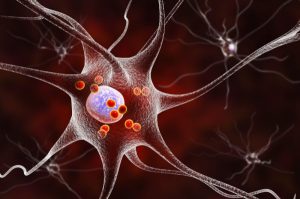
A collection of induced pluripotent stem cell lines from a Parkinson’s disease patient with triplication of the α-synuclein locus and an unaffected first-degree relative has been produced.
Application
Development Status
Opportunity
Despite Parkinson’s disease (PD) being the most common neurodegenerative movement disorder, it is infamously difficult to model and assess the disease process in the laboratory. This is in part due to the inaccessibility of diseased neurons from patients. Transgenic models of α-synuclein do not fully replicate the phenotype of the human disease. Existing primary cell models also have major drawbacks, animal tissues being challenging to sustain in culture, and immortalized cell lines harbouring abnormalities that make them significantly different to normal human neurons.
A potential solution is to utilize disease-specific induced pluripotent stem cells (iPSCs) derived from familial PD patients. Dr Tilo Kunath’s group developed iPSCs with genetic mutations known to cause Parkinson’s. This model represents a valuable experimental system to identify compounds that reduce levels and aggregation of α-synuclein and investigate the mechanistic basis of neurodegeneration.
Technology
The SNCA gene encodes α-synuclein, a protein known to be related to Parkinson’s disease development. Triplication of SNCA results in increased levels of α-synuclein messenger RNA and protein and is correlated with rapid, early-onset Parkinson’s disease.
Our researchers have produced multiple induced pluripotent stem cell (iPSC) lines isolated from a Parkinson’s disease patient with SNCA triplication. The lines are well characterised and successfully differentiated into midbrain dopaminergic neurons, the neuronal cell type primarily affected in Parkinson’s disease. The neurons derived from patients expressed double the amount of α-synuclein protein than the healthy control, accurately recreating the disease state cell pathology.
Benefits
Publication
Devine, M.J. et al. Parkinson’s disease induced pluripotent stem cells with triplication of the α-synuclein locus. Nat. Commun. 2:440 doi: 10.1038/ncomms1453 (2011).
Quote: TEC1104036

Technology Transfer Manager
School of Biological Sciences
The Roslin Institute
College of Veterinary Medicine